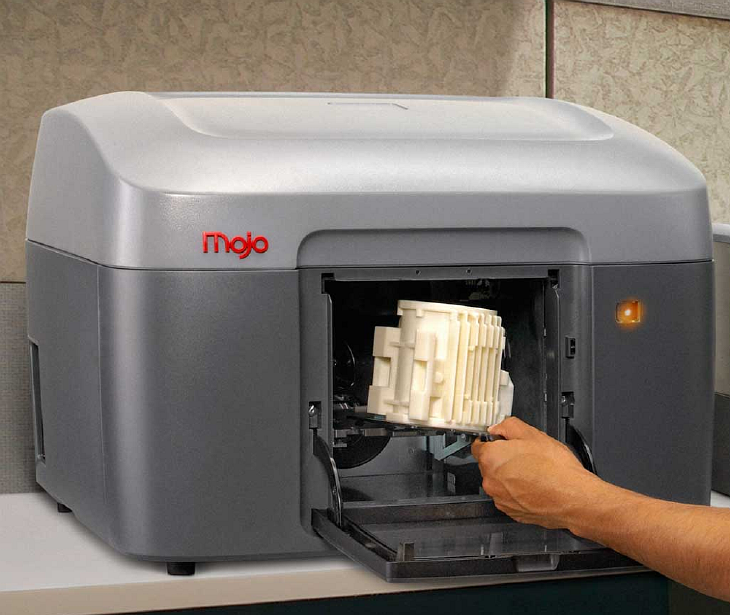Print Bed Material in 3D Printing

Print Bed Material refers to material used in 3D printing that will stick to the print bed, yet not become permanently fixed on the print bed. The material needs to stick to the print bed so that the part will not slide around. If the part does slide around, the printed material has no foundation to add to, therefore is printing in air and ruins the part. If there is more than one part being printed, the material will typically be dragged around the print bed and wreak havoc on the other parts, thus ruining the whole lot. Materials such as PLA and ABS plastic are commonly used as well as certain metals and ceramics.
ABS Plastic in 3D Printing
ABS plastic should be kept in a dry area and sealed off from the atmosphere. Moisturized ABS plastic tends to bubble out of the printer nozzle, creating problems with the part in visual appeal, strength, and durability. Heated ABS plastic has a strong odor of hot plastic and rooms should be well-ventilated. ABS has a tendency to curl upwards in direct contact with the print bed. To solve this problem, heat the print bed and ensure that the surface is smooth, flat, and clean. ABS is a strong plastic with mild flexibility.
PLA Plastic in 3D Printing
PLA plastic should be kept in a dry area and sealed off from the atmosphere. Moistureized PLA plastic, along with bubbling out of the printer nozzle, can be discolored and can undergo de-polymerization, which can cause a reduction in printed part properties. PLA plastic has a lesser odor than ABS plastic and resembles cooking oil. PLA plastic is less prone to warping and the print bed does not need to be heated.
Sandstone in 3D Printing
Sandstone is a material made by Z-Corp printers, which is a gypsum-based powder bound together with an adhesive and finished with cyanoacrylate. The product is rigid and slightly brittle, best suited to decorative figurines rather than practical parts, which would not withstand great loads or heavy use. Sandstone can print 3D objects in full color but is not waterproof. The colors will fade when wet.
Stainless Steel in 3D Printing
Stainless steel is a strong, rigid material. It can be used for jewelry, parts, statues, and other items. In 3D printing, steel powder is layered and then a print head deposits binding, dried, and then another layer is added until the part is complete.
Ceramics in 3D Printing
Ceramics are a food-safe material created by ceramic powder which is bound together with a binder, fired, and glazed. In 3D printing, softer edges and curves are less likely to crack than sharp edges. The 3D printer builds the model by layering ceramic powder and placing binders, and then layering more powder. Then the model is put into a kiln and fired, glazed, and then fired again.
To learn more about the latest in 3D Printing, check out our 3D printing.